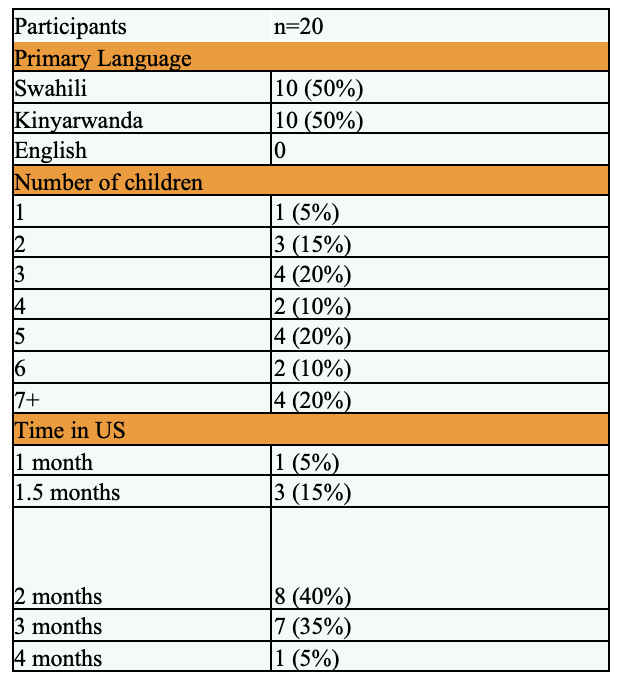Global Neonatal & Children's Health
Global Neonatal & Children's Health 4
546 - Assessing use of Multimedia Tools in Improving Emergency Service Utilization for Children of Congolese Refugees in Louisville, KY
Publication Number: 546.41
.jpg)
Meagan R. Doyle, MD (she/her/hers)
Chief Resident
University of Louisville School of Medicine
Louisville, Kentucky, United States
Presenting Author(s)
Background:
In 2018, 1200 refugees entered Kentucky, and of the refugees that arrived and underwent health screenings, 56% were from the Democratic Republic of Congo (DRC). Refugees receive health education upon arrival in the United States, however, explanations of how to navigate the health care system is limited. Moreover, many refugees may not be able to read their spoken language.
Objective: The objective of this study is to assess the acceptability of a novel multimedia educational tool providing on-demand health information about emergency services utilization to caregivers who are refugees/asylees from the DRC.
Design/Methods:
The study team created a multimedia tool outlining general emergency guidelines based on American Academy of Pediatrics recommendations in English, Kinyarwanda and Swahili. Recommendations were categorized by child age (infants, school-age and adolescents). A community health worker who is a native speaker of Kinyarwanda and Swahili created the audio recordings from transcripts. Recordings and written materials in the three languages were uploaded on a website. A questionnaire was developed to assess acceptability and knowledge gained from the tool. A convenience sample of caregivers from pediatric clinics that serves many refugee/ asylee children were recruited. Caregivers were given a pre-survey in their native language followed by demonstration of the website and post-survey. Website hits were monitored. Descriptive statistics were used to report results.
Site: https://congokidshealth.wordpress.com/
Results:
The tool was evaluated by 20 caregivers between March and October 2022 during a visit at their primary care provider’s office. The primary language spoken by caregivers: 50% (n=10) Swahili, 50% (n=10) Kinyarwanda; no one reported English as a primary language. The mean length of time in the US was 2.3 months. The mean number of children per family was 4.6. Fifty-five (n=11) percent of caregivers rated the interpretation as "excellent", 25% (n=5) rated it "Very good", and 20% (n=4) rated it ”Good”. All caregivers (n=20) answered correctly on how to call for an ambulance after reviewing the site. All caregivers (n=20) reported that they would recommend the site to friends and family, 70%(n=14) reported they would be able to access the tool easily, and 85% (n=17) reported that they would use the site again.
Conclusion(s):
The tool was generally well-received by caregivers who were refugees from the DRC. This pilot study suggests that web-based multimedia tools may be a helpful way to disseminate information in refugee populations.

.png)
